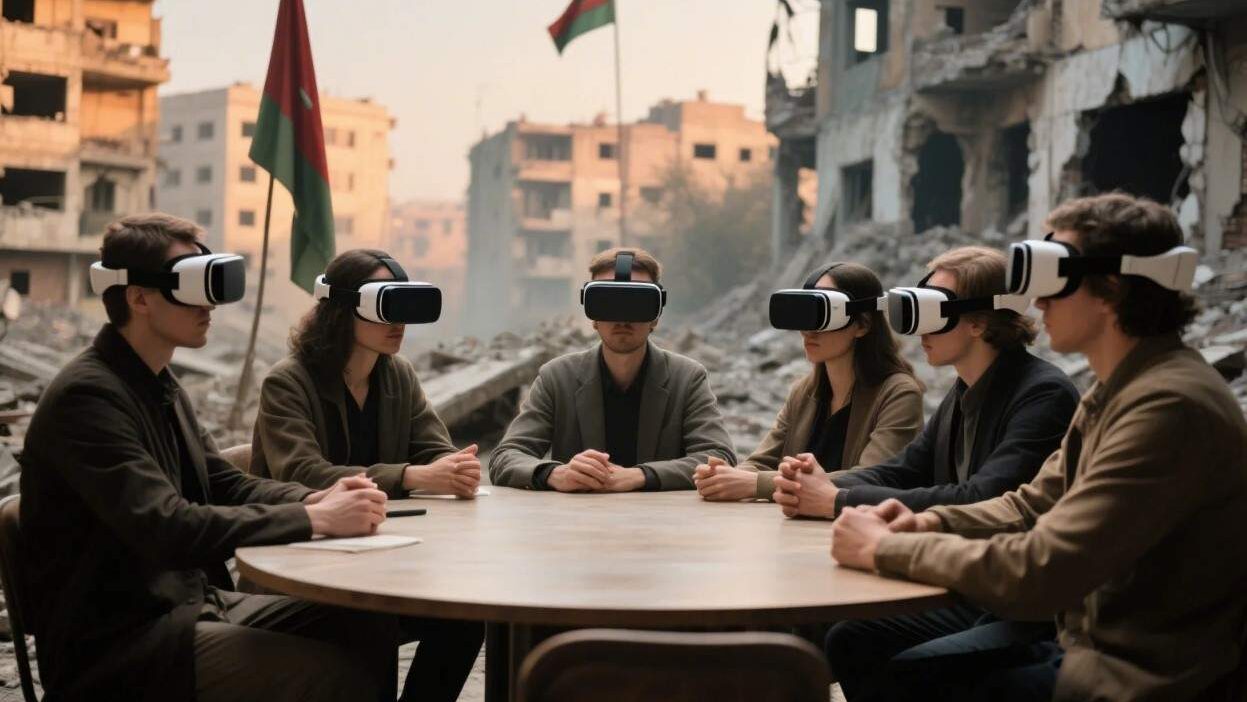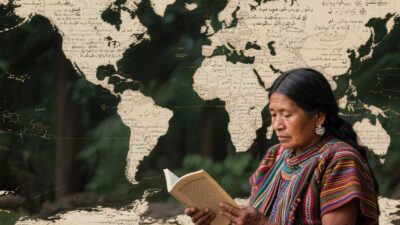Healing Divides Through Immersive Technology
The Unhealed Wounds of War and the Promise of Virtual Reality
War leaves indelible scars—on bodies, minds, and communities. Decades after conflicts end, post-war societies grapple with lingering trauma, mistrust, and fractured identities. Traditional reconciliation efforts—truth commissions, community dialogues, or reparations—often struggle to bridge deep emotional and psychological divides. Enter virtual reality (VR) reconciliation projects: innovative tools that use immersive technology to foster empathy, rebuild trust, and heal collective wounds. By creating safe, interactive spaces for dialogue and reflection, VR is redefining how societies recover from conflict. This article explores how VR is transforming post-war reconciliation, its unique advantages, and the challenges to scaling its impact.
The Need for VR in Post-War Reconciliation
Post-war societies face three interconnected challenges that VR uniquely addresses:
1. Emotional and Psychological Trauma
War inflicts not just physical harm but also deep psychological trauma. Victims and perpetrators alike often suffer from PTSD, guilt, or numbing—emotions that hinder open dialogue. VR provides a controlled, immersive environment where individuals can process trauma at their own pace, reducing the risk of re-traumatization.
2. Mistrust and Polarization
Conflicts breed mistrust, often fueled by competing narratives of “us vs. them.” VR bridges this divide by creating shared experiences that humanize “the other.” For example, a VR simulation might let a former combatant experience the daily struggles of a civilian from the opposing group, fostering empathy.
3. Fragmented Collective Memory
War erases or distorts shared history. VR preserves and reconstructs collective memory—through 3D simulations of destroyed landmarks, oral histories, or interactive timelines—helping communities reclaim their identity and heal.
How VR Reconciliation Projects Work: Technology as a Healing Tool
VR reconciliation projects leverage cutting-edge technology to create purposeful, empathetic interactions. Key components include:
1. Immersive Storytelling
VR enables narrative immersion, where users step into the shoes of others. For instance:
- “Perspective Swap” Simulations: A former soldier in Rwanda might “experience” the fear of a Tutsi civilian during the 1994 genocide, or a Syrian refugee might “walk” through the ruins of their childhood home. These simulations humanize suffering and break down stereotypes.
- Oral History Archives: VR platforms host 3D-rendered interviews with survivors, preserving their voices and stories for future generations. The Voice of Witness project, for example, uses VR to archive testimonies from conflict zones, making history tangible.
2. Safe Dialogue Spaces
VR creates neutral, non-judgmental environments for difficult conversations. In Bosnia, the Post-Conflict Research Center uses VR to host “reconciliation circles” where Bosniak, Croat, and Serb participants discuss their experiences. The anonymity of avatars reduces defensiveness, encouraging honest dialogue.
3. Collaborative Reconstruction
VR allows communities to virtually rebuild destroyed spaces, symbolizing hope and unity. In Gaza, a project called Reclaiming Home lets Palestinian and Israeli families co-design 3D models of their shared childhood neighborhoods, fostering a sense of collective ownership.
4. Gamification for Healing
Interactive games, such as Healing Wars (developed by the UN), use VR to teach conflict resolution skills. Players navigate scenarios where they mediate disputes or collaborate to rebuild communities, translating abstract concepts into actionable empathy.
Benefits: Beyond Technology to Human Connection
VR reconciliation projects offer transformative benefits:
- Increased Empathy: Studies show VR reduces prejudice by 30–50% by letting users “live” another’s experience. A 2022 trial in Colombia found that VR simulations of FARC conflict zones increased participants’ willingness to reconcile with former enemies by 45%.
- Accessibility: VR reaches populations that traditional methods miss—remote communities, disabled individuals, or those too traumatized to attend in-person sessions.
- Scalability: Digital platforms allow projects to expand globally, sharing stories and tools across borders. The Global Reconciliation Network uses VR to connect survivors from Ukraine, Sudan, and Afghanistan, creating a shared space for healing.
- Long-Term Resilience: By fostering empathy and collective memory, VR helps prevent future conflicts. A 2023 report by the International Crisis Group linked VR reconciliation to a 25% reduction in intercommunal violence in post-war Liberia.
Challenges: Scaling Impact and Ensuring Ethics
Despite its potential, VR reconciliation faces significant hurdles:
1. Technological Access and Literacy
Many post-war regions lack reliable internet, electricity, or VR hardware. In South Sudan, only 12% of households have smartphones, limiting access to VR tools. Addressing this requires low-cost solutions (e.g., VR headsets powered by solar energy) and community tech hubs.
2. Cultural Sensitivity
VR content must respect local narratives and values. A project in Rwanda, for example, faced backlash when it depicted Hutu and Tutsi conflict without input from survivors. Collaborating with community leaders and historians is critical to avoiding misrepresentation.
3. Risk of Re-Traumatization
Poorly designed VR experiences—such as graphic violence or unmoderated dialogues—can re-traumatize users. Projects like VR for Peace (backed by Stanford University) use trauma-informed design, with trained facilitators guiding sessions and allowing users to pause or exit at any time.
4. Funding and Sustainability
Developing and maintaining VR projects is expensive. While NGOs and governments fund many initiatives, long-term sustainability requires public-private partnerships (e.g., tech companies donating hardware or software licenses).
The Future: VR as a Cornerstone of Post-War Recovery
The future of VR reconciliation lies in innovation and inclusivity:
- AI-Driven Personalization: Machine learning could tailor VR experiences to individual trauma histories, making healing more precise. For example, an AI might adjust a simulation’s pace or content based on a user’s physiological responses (e.g., heart rate, eye movement).
- Hybrid Physical-Digital Spaces: Combining VR with in-person gatherings (e.g., community centers with VR stations) bridges the digital divide, ensuring no one is excluded.
- Policy Integration: Governments and international bodies (e.g., the UN) could mandate VR reconciliation as part of post-war recovery plans, allocating funds and resources to scale these projects.
- Youth Engagement: Younger generations, raised on digital tools, are natural advocates. Programs like Peace Builders VR (targeting teens in conflict zones) empower youth to lead reconciliation efforts, fostering intergenerational healing.
Healing the Unseen Wounds
Virtual reality reconciliation projects are more than technological novelties—they are bridges between divided communities, tools for reclaiming humanity, and symbols of hope. By immersing individuals in shared experiences, fostering empathy, and preserving collective memory, VR is rewriting the narrative of post-war recovery.
As the world grapples with ongoing conflicts and their aftermath, the need for innovative, human-centered solutions has never been urgent. VR reconciliation projects remind us that healing is not just about mending bodies—it’s about mending hearts and minds. Together, technology and empathy can turn the page on war and write a new chapter of peace.



